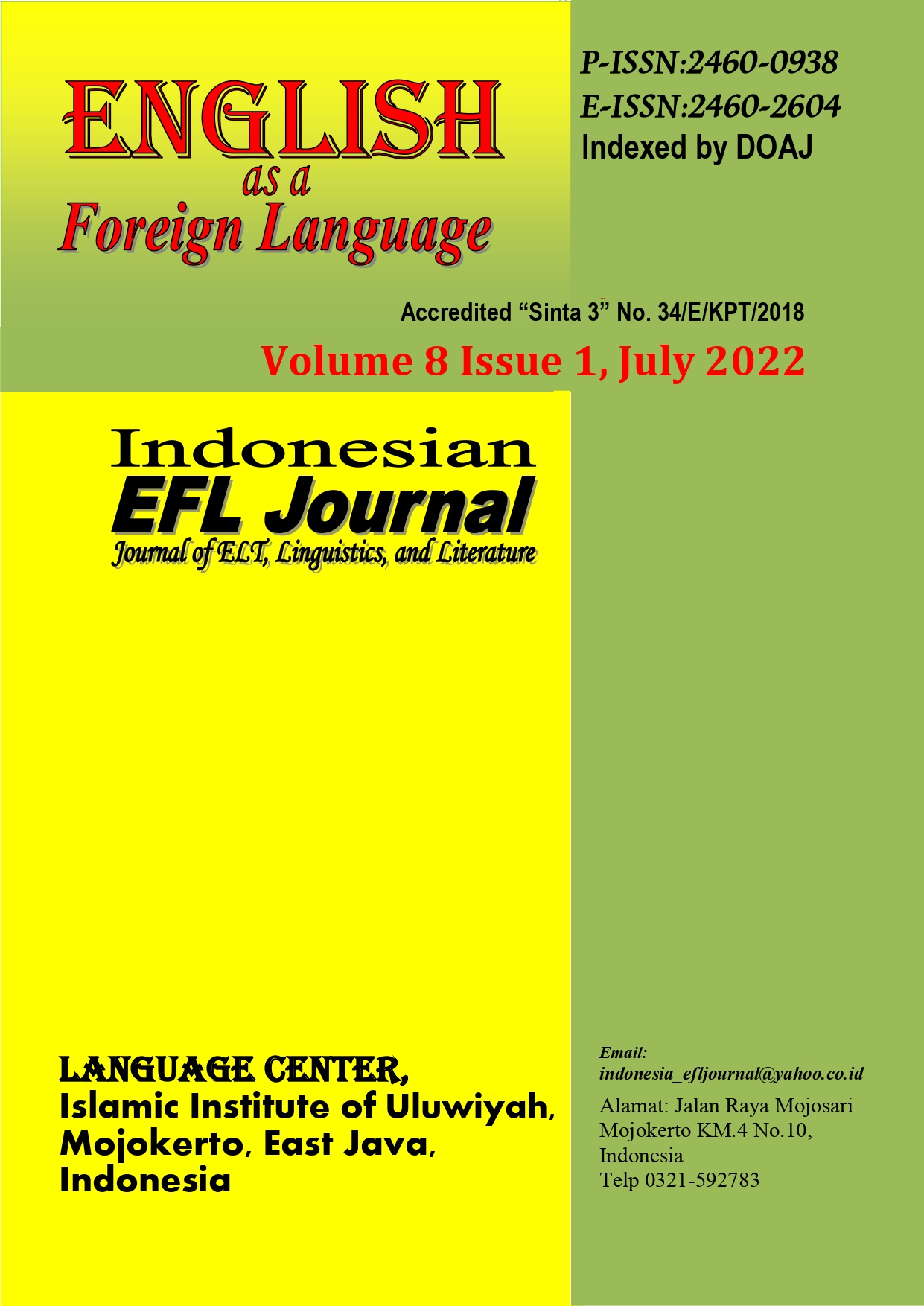An Analysis of Pronunciation Errors Produced by Indonesian Learners of English: a Case Study of English Department Students of Trunojoyo University
Abstract
The present study investigated pronunciation errors made by English learners as a foreign language (EFL). We attempted to find the types of pronunciation errors in the consonants and vowels in English. To achieve this, twenty students of the English Department at Universitas Trunojoyo Madura were recruited as participants. They were asked to pronounce seventy-five English words that contain the consonants [v], [θ], [ð], and [ʒ] and the vowels [ʌ], [æ], [ɑ], [ɜ], [ɒ], [eɪ], [əʊ], and [ɪə]. The consonants and vowels were chosen based on the differences between English and Indonesian since the participants’ first language is Indonesian. The study used a descriptive qualitative method employing the convenience sampling technique for its data collection. The data which were obtained from recordings of stimuli by the participants were transcribed impressionistically using phonetic transcriptions to identify the errors. The results showed that the most frequent type of pronunciation error produced by the participants was sound substitution (83% of the participants produced this error), while sound deletion and insertion were 67% and 63%, respectively. It was also found that they produced errors not only in pronouncing [v], [θ], [ð], [ʒ], [ʌ], [æ], [ɑ], [ɜ], [ɒ], [eɪ], [əʊ] but also in pronouncing [ɪə] as well as [t], [tʃ],[k], [b], [d], [dʒ], [j], [w], [ɪ], [ə] in certain positions. Furthermore, we found that the Indonesian phonological interference, the problem of the silent letter, pronouncing a word as it is spelt, overgeneralization, and hypercorrection were possible factors that contributed to the errors. In addition, the position of consonants also induced the participants to make errors in their pronunciation.
References
Chaer, A. (2009). Fonologi Bahasa Indonesia. Jakarta: Rineka Cipta
Dulay, H., Burt, M., & Krashen, S. (1982). Language Two. New York: Oxford University Press.
Heselwood,B.(2013).PhoneticTranscriptionin Theoryand Practice.Edinburgh: Edinburgh University Press
Kenworthy, J. (1987). Teaching English Pronunciation. New York: Longman Inc.
Keshavarz, M. H. (2011). Contrastive Analysis and Error Analysis. Tehran: Rahnama Press.
Ladefoged, P., & Johnson, K. (2011). A Course in Phonetics. Canada: Wadsworth Cengage Learning.
Mathew, I. B. (1997). Errors in pronunciation of consonants by Indonesian, Gayo, and Acehnese learners of English as a foreign language (Graduate thesis, Edith Cowan University, Perth, Australia). Retrieved from http://ro.ecu.edu.au/theses/904
Muslich, M. (2008). Fonologi Bahasa Indonesia: Tinjauan Deskriptif Sistem Bunyi Bahasa Indonesia. Jakarta: Bumi Aksara.
Richard, J., C., &Schmidt, S. (2002). Language Teaching and Applied Linguistics.London: Pearson Education Limited.
Copyright (c) 2022 Indonesian EFL Journal: Journal of ELT, Linguistics, and Literature

This work is licensed under a Creative Commons Attribution-ShareAlike 4.0 International License.
All rights reserved.
this publication may be reproduced, stored in a retrieval system, or transmitted
in any form or by any means, electronic, mechanical, photocopying, recording.




